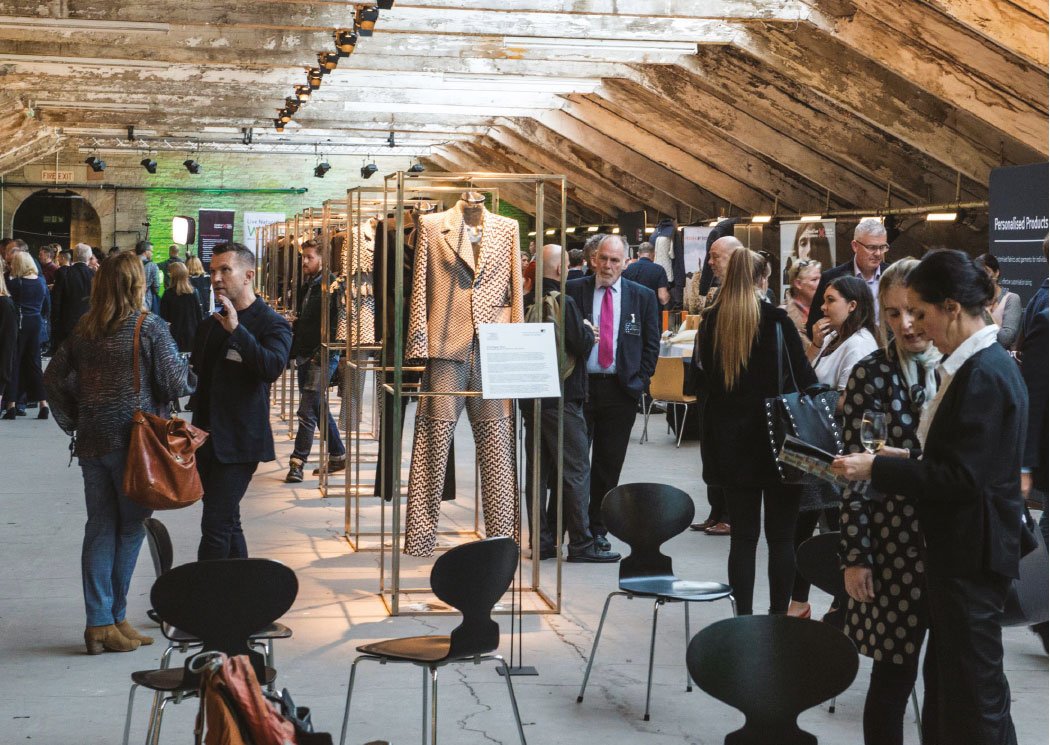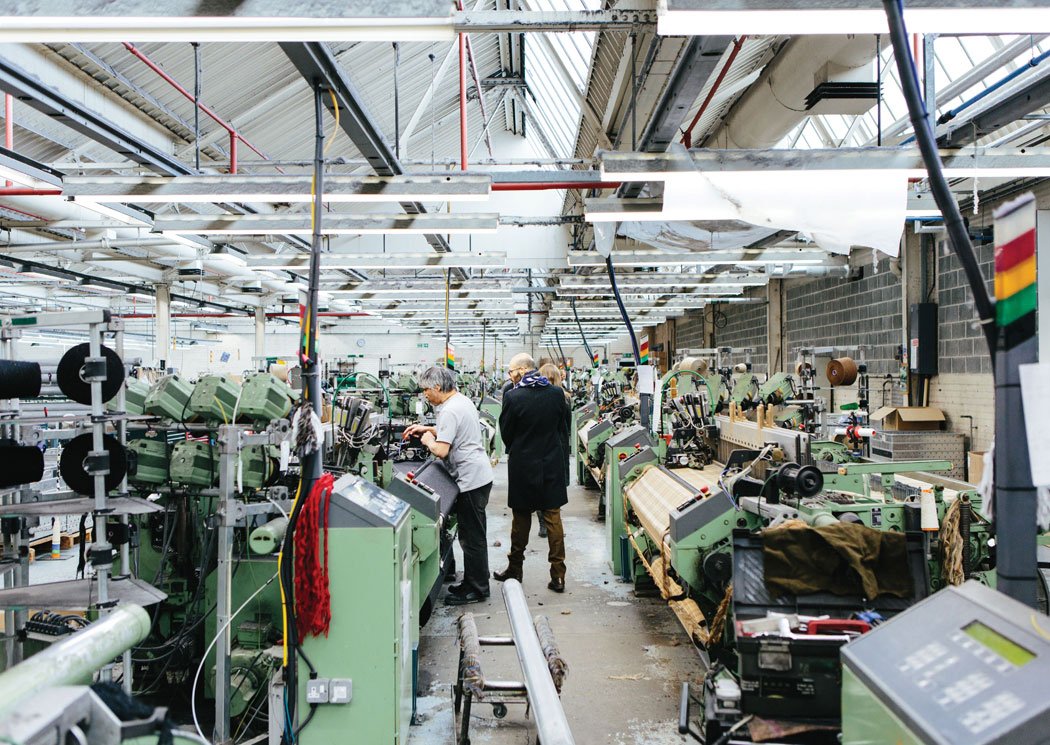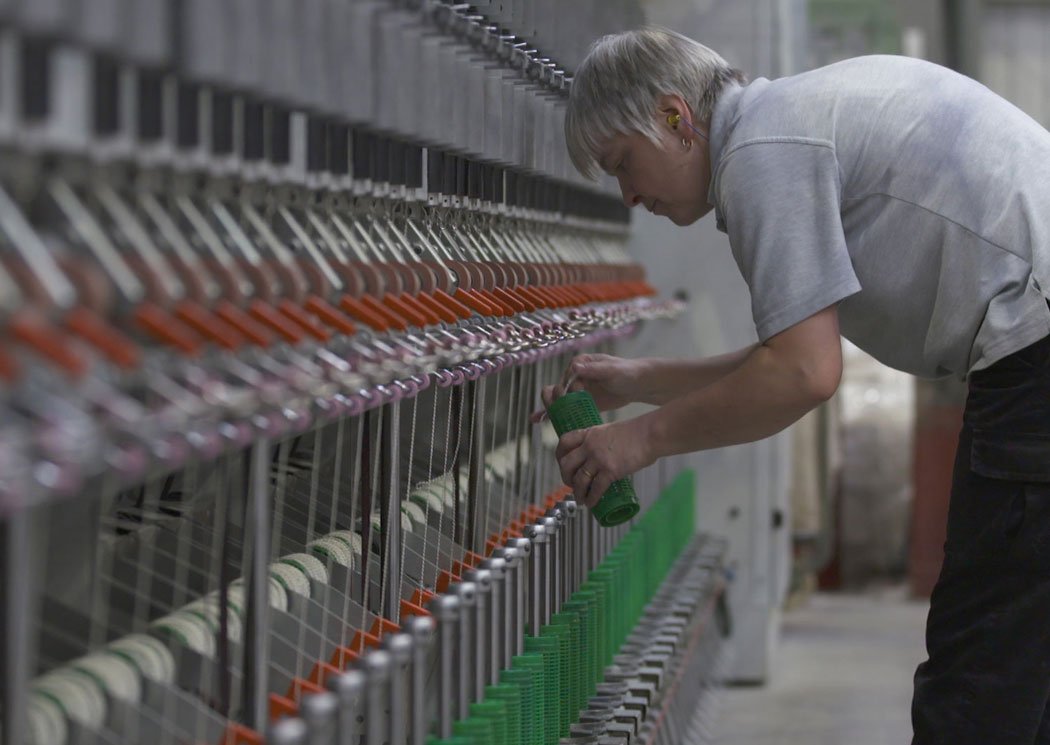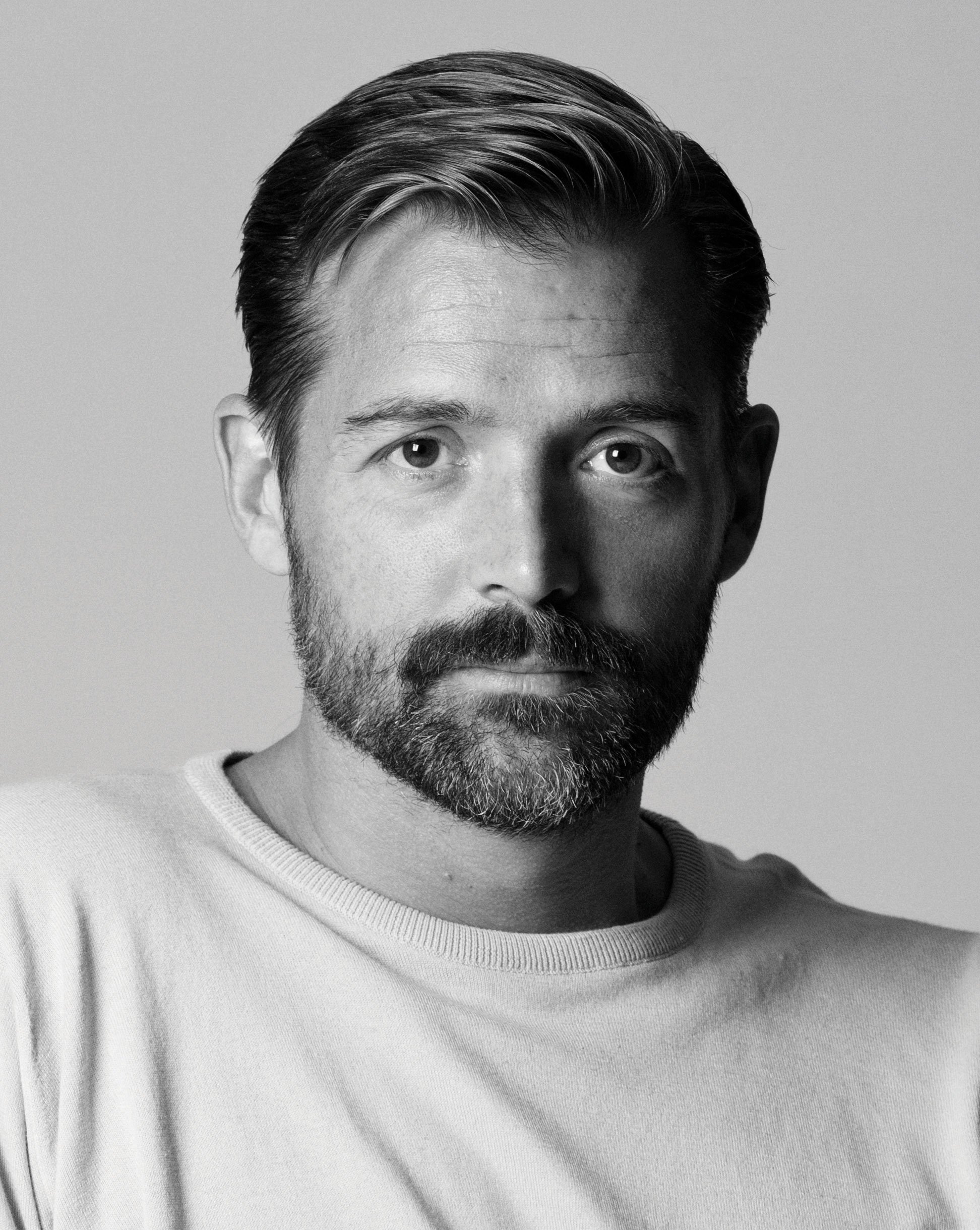



With its roots in textiles, Leeds is spearheading a £5.4 million project to transform the UK fashion industry.
Textiles have been part of the fabric of the University of Leeds since its earliest days. The city’s prosperity was founded in wool. Sheep were farmed in the Yorkshire countryside for centuries before the canals and woollen mills of the Industrial Revolution enabled the city to meet a growing demand for cloth.
The Yorkshire College of Science – one of the Victorian institutions that came together to form the University – was founded with support from local businesses eager to ensure the region retained its textile expertise in the face of overseas competition. The creation of the University campus owes much to the support of the Clothworkers’ Company, one of London’s ancient livery companies.
Almost 150 years on, the pioneering work of the University’s Future Fashion Factory holds to this founding principle. Working with more than 135 industrial partners, its £5.4 million research and development programme explores advanced technologies to transform design and manufacturing processes, reduce waste and create significant economic value for the region. It is allowing digital technology to reinvigorate a centuries-old industry.
“We’re taking a new approach to the design of textile products for the 21st century,” says Professor Stephen Russell, Director of the Future Fashion Factory.
While conventional wisdom suggests Yorkshire’s preeminence in textiles is long gone, Steve points to the region’s underlying strengths: “Businesses across Yorkshire supply many of the world’s best-known, high-end brands. Overseas buyers value the provenance, quality and heritage of UK-made products.” He cites the example of Burberry: an international luxury brand with major business services and manufacturing operations based in the Leeds City Region.
Yet the industry as a whole is looking to address challenges across design, manufacturing and retail operations, to increase international competitiveness and drive further growth.
Reducing lead times is particularly important, as Steve explains: “Developing high-value luxury products is a lengthy creative process. It can take months of design time and extensive physical sampling throughout the supply chain before products are finalised and reach the point of sale, all of which limits agility.” And traditional design and development processes are leading to other challenges: “Across the supply chain, products are being designed and manufactured that don’t sell. They can end up as dead stock or waste, incurring significant cost – and offloading it at a discount is not attractive to many brands.”
The industry as a whole faces further questions around sustainability and environmental impact. Particularly as a result of fast fashion – clothes that move quickly from catwalk to sale to reflect current fashion. Thousands of tonnes of waste clothing are routinely sent to landfill sites each year, even though the bulk of it could be reused or recycled.
Future Fashion Factory is addressing each of these challenges head on. “It’s about targeted innovation along the supply chain, through the development of new sustainable processes and digital tools to guide the design and manufacturing process from start to finish,” Steve says. “We’re helping businesses shorten their lead times and customise highvalue products to the preferences of the end-user, quickly, economically and sustainably.”
Technology is involved even before a designer puts pen to paper. “Artificial intelligence and machine learning can assist with understanding international consumer preferences around colour, fabric features and other attributes – and we are feeding this into the creative design process. These insights are helping designers to create new products that immediately resonate with consumers.”
Yet Steve is keen to stress the individual designer’s key role in the creative process: “This is absolutely not about technology replacing human creativity, but rather developing new tools with which to create exciting new products. We’re supporting the development of a data-driven design process so that products are much nearer to being right, first time.”

Fashion – from design and
manufacture to retail – is one of the biggest creative industries in the UK, employing 900,000 people and contributing around £32 billion to GDP.

The Leeds City Region employs 25,000 people making and selling textiles to some of the world’s biggest brands.

Every year, around 350,000
tonnes of clothing goes to landfill in the UK. Future Fashion Factory is exploring changes to the industry that could help reduce this.
Partners in the Future Fashion Factory include some of Britain’s best known high-street names – including Burberry, Pentland Brands, Arcadia Group, Missguided and New Look.
Undergraduate and postgraduate programmes in the School of Design are creating the fashion leaders of the future; talented individuals steeped in a culture where technology is harnessed to support the design process. “Collaborations between designers and manufacturers are enabling the development of technologies that should cut the time to market, reduce production costs and increase margins,” says Steve.
A key part of the future is the potential for mass customisation, which is very different to traditional models of producing and selling large quantities of the same product. Steve explains: “We’re exploring new ways of using digitally-linked textile processes to enable rapid changes in fabric properties. So we’re producing greater creative output in smaller quantities, quickly and efficiently.” This work opens the door to the production of personalised products in shorter runs. Establishing digitally-connected factories will allow small, independent designers to easily access the local manufacturing infrastructure.
In one ambitious research and development project, researchers are examining how tocommunicate the complex aesthetics of a fabric remotely. “We’ve probably all bought items of clothing on the internet and then realised that they didn’t quite fit, feel or drape in the way we expected,” says Steve. While this affects individual customers, it’s just as important in the communication between companies in the supply chain: “If you are designing and manufacturing a high-quality fabric in Yorkshire and your fashion brand customer is thousands of miles away, samples may be going backwards and forwards in the post before a decision is made. This can be slow and costly.
“We’re working on a new method to accurately communicate over the internet the complexities of fabric aesthetics, including their tactile properties. This is important not just to online retailers but also to speed up business-to-business communications within the supply chain.”
In another project, the team is working with textile manufacturing partners to transform the way in which industrial training courses are delivered by developing a virtual reality platform, which creates an immersive learning environment. It’s another example of how the research and development of the Future Fashion Factory is being carefully targeted to address specific, unmet, industry needs.
“In short, the work of Future Fashion Factory is about enabling start-ups, SMEs and larger companies to design the right product for the right customer at the right time,” says Steve. “By doing this well, we can continue to drive economic growth and achieve sustainable development across the industry.
“It’s a beautiful thing to go into a Yorkshire textile factory, built during the Industrial Revolution, and see how digitalisation is transforming the design and manufacture of high-quality products that are sold all over the world.”

Future Fashion Factory showcased its work at a special exhibition against the historic backdrop of Salt’s Mill in Saltaire last autumn.

Abraham Moon and Sons, one of the partners in Future Fashion Factory, was established in Guiseley in 1837 – the first year of Queen Victoria’s reign.

State-of-the-art facilities at Laxtons of Baildon, near Bradford, one of the partners in Future Fashion Factory.

Now the leader of five clothing businesses, including UK-made sustainable fashion brand Community Clothing, Patrick takes a deep interest in the University’s School of Design. “Various different scientific disciplines have merged with the design strengths of the school. Leeds gets practical science, engineering and design under one roof – and in this country that’s very rare.”
Since taking over clothing manufacturer Cookson & Clegg, Patrick has been a regular visitor to campus, and has enlisted the help of Future Fashion Factory to embed new technology into the firm’s Blackburn factory: “Leeds is breathing new life into legacy manufacturing businesses like this to make them more efficient and ready to face the challenges of the clothing industry.”
He readily acknowledges those challenges: “Current textile recycling is predominantly about moving unwanted garments from developed countries to poorer countries. It’s not so easy to take dyed textiles and turn them into new clothes; making it economically viable is a huge challenge that needs to be fixed.”
And he sees great potential in Future Fashion Factory to create a brighter future: “It’s not just about making better clothing, but developing a generation of designers equipped with an understanding both of science and the issues of sustainability.
“Businesses can be a strong force for societal change, especially in Yorkshire and Lancashire. We won’t replace the millions of textiles jobs that have been lost, but we could create tens of thousands of jobs that have greater educational demands and higher skills, which are transferable to other industries.”